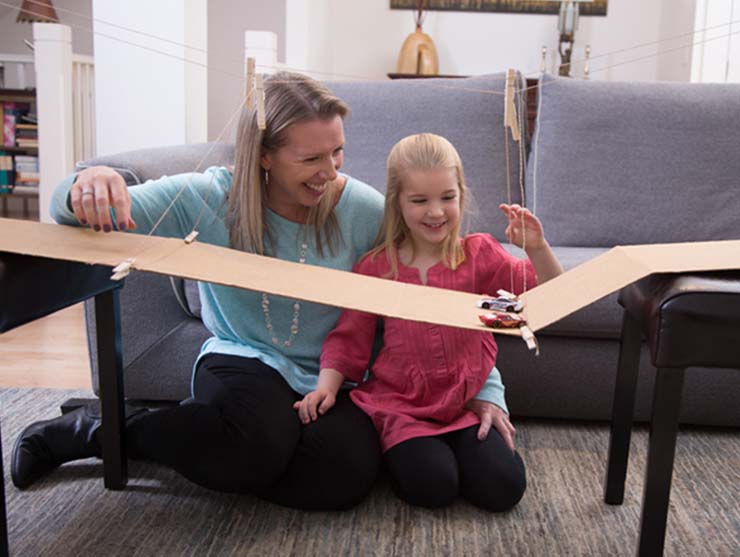Does your daily morning routine begin with your toddler insisting on wearing a tutu or superhero cape to school? Or does your preschooler insist that blue polka dot socks go with her pink flower dress?
Youre not alone. Many parents struggle with fashion wars with their children and getting them dressed, especially during busy mornings. But before it becomes a battle where nobody wins, lets consider whether the kids fashion choice really is inappropriate or something else. Most power struggles over clothing are the result of young children practicing their independence. Toddlers and preschoolers, especially, are developing a sense of themselves and often push the established boundaries. Similarly, older children may be trying to discover who they are and how to express themselves through their clothing choices. Having children learn to dress themselves and select their own clothing and style, however, are important life skills that we as parents need to help them learn.
Tips to Manage Power Struggles with Children Over Clothes
Here are some ways to reduce the power struggle over choosing clothes and getting dressed.
- Determine inappropriate clothing options first. List the clothing choices and scenarios that you and your parenting partner (if applicable) deem inappropriate for kids to wear. Clothing that does not protect your child against the weather or clothing that is inappropriate for the occasion may make the inappropriate list. Jeans may be okay for a friends birthday party but not for a formal event, for example.
- Draw your lines and pick your clothing battles carefully. Ask yourself, "Do I really care if my child goes to preschool with one pink sock and one purple sock if she did it all by herself?" "Does it matter if my middle-schooler wears all black and wants to style his hair in the latest trend?" Maybe, but most children are merely experimenting with self-expression, exerting independence, or expressing rebellious but normal teenage behavior. Ultimately, most of us have to conform to societal expectations of appropriate clothing in order to be successful and will learn these skills over time. Consider the underlying reason for their fashion choices and decide if its worth the battle.
- Let children dress themselves by giving them choices. When you can, give young children at least two clothing options and choices with acceptable outcomes. "Do you want to wear your blue pants or green shorts today?" For infants and toddlers, the dressing part may not so much be "the what" of clothing as "the how" of dressing. Young children just dont want to get dressed sometimes, and thats especially true in the morning and when were in a rush. Avoid power struggles with children by giving them the choice of getting dressed for the next day at night. Dress them for bed in comfortable sweats or short outfits, depending upon the season. In the morning, change your childs diaper, brush his or her hair, and go.
- Reserve the right to veto certain outfits and clothing. Even if you feel comfortable letting your children express themselves with fashion, let them know that you reserve the right to object to them wearing certain outfits. Explain the reasons for the veto so that children understand why their clothing choice was not appropriate. Or remind them when a certain outfit is appropriate. "You can wear your cape any time you want at home, but when we go to religious services, the cape stays at home," for example.
- Be consistent with fashion rules and expectations. Once you have set expectations with your childs wardrobes and clothes, stick with them. Dont teach your child to outlast you. Avoid falling into the pitfall of "I said No. No. No. No. No. All right, just this once."
- Establish parent choice days. From the time your children are young, you can establish occasions when your child has to wear what you choose. These may be holidays, religious services, special ceremonies, or family gatherings.
- Plan outfits ahead. For preschoolers, try selecting all the clothes for the week to avoid morning power struggles and battles, or give your child two outfits to choose from when getting dressed. For especially independent dressers, remove any clothing that youre not willing to let your child wear from her closet. Make "I dressed myself today" stickers so your child can feel proud of her choices.
- Shop for clothes and outfits together. For school-age children, shop together. Let your child know your expectations before you get to the store. For example, "We are buying school shoes, not flip flops today." Give your child a clothing budget for each shopping trip. With your assistance, let him or her decide which clothing and shoes he or she wants.
Fashion wars and clothing battles can become a power struggle or an opportunity for children to make choices and learn from them. The tips above can help ease the possible tension around clothing decisions.
- When it comes to getting her boys dressed, our mom blogger realized its best to allow children to be themselves with their fashion choices.
- What do you do with all those outgrown kids clothes? Here are tips for selling used clothes & toys online.
- Pirates, skateboards & superheroes—are these the only fashion options for boys? Find other options for cute boys clothes.
- Mom jeans, mom swimsuits, DIY gel manicures, long hair over 40—head over to the Family Room blog to hear more fashion talk from our bloggers.
- "Its almost impossible to get my 2.5 year-old dressed in the morning!" See what advice parents have for a mom who struggled with getting her toddler dressed in the morning.
- Our blogger shares her biggest mistake as a parent—engaging in fashion wars with her daughter.





